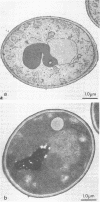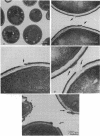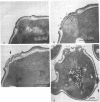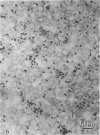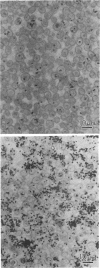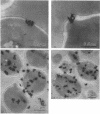Abstract
Extensive lesions were produced in cell walls of Saccharomyces cerevisiae by the bleomycin family of anticancer antibiotics (30 min to 4 h). Electron micrographs revealed that the alterations were most frequently large breaks and small interruptions or holes in cell walls, which sometimes extended into cell membranes. Large portions of cell walls were sometimes lost. Cell walls were frequently ruptured in one or more positions. More than 75% of bud scar regions in single-plane sections and all bud scars in serial sections exhibited many interruptions and breaks after 3 or 4 h of treatment. The discovery of extensive damage to cell walls was consistent with the preferential (approximately 70%) association of radiolabeled bleomycin with cell walls and perimeters of bud scar regions after short exposures (30 min). After longer exposures, the distribution of silver grains changed from a predominant association with cell walls (30 min) to an increased association with the cell cytoplasm (1 to 4 h). This correlated with increased ultrastructural damage, since damage to cell walls was generally more frequent and more severe with increasing length of treatment (30 min to 4 h) or dose (25 to 100 micrograms/ml). Although DNA lesions are believed to be the lethal properties of bleomycins, the lesions produced in cell walls are also lethal properties of the antibiotics. The distributions of lesions on cell walls suggested a generalized interaction of the antibiotic with a cell wall component. These results led us to hypothesize a mechanism of effective antifungal action for the bleomycin family of antibiotics.
Full text
PDF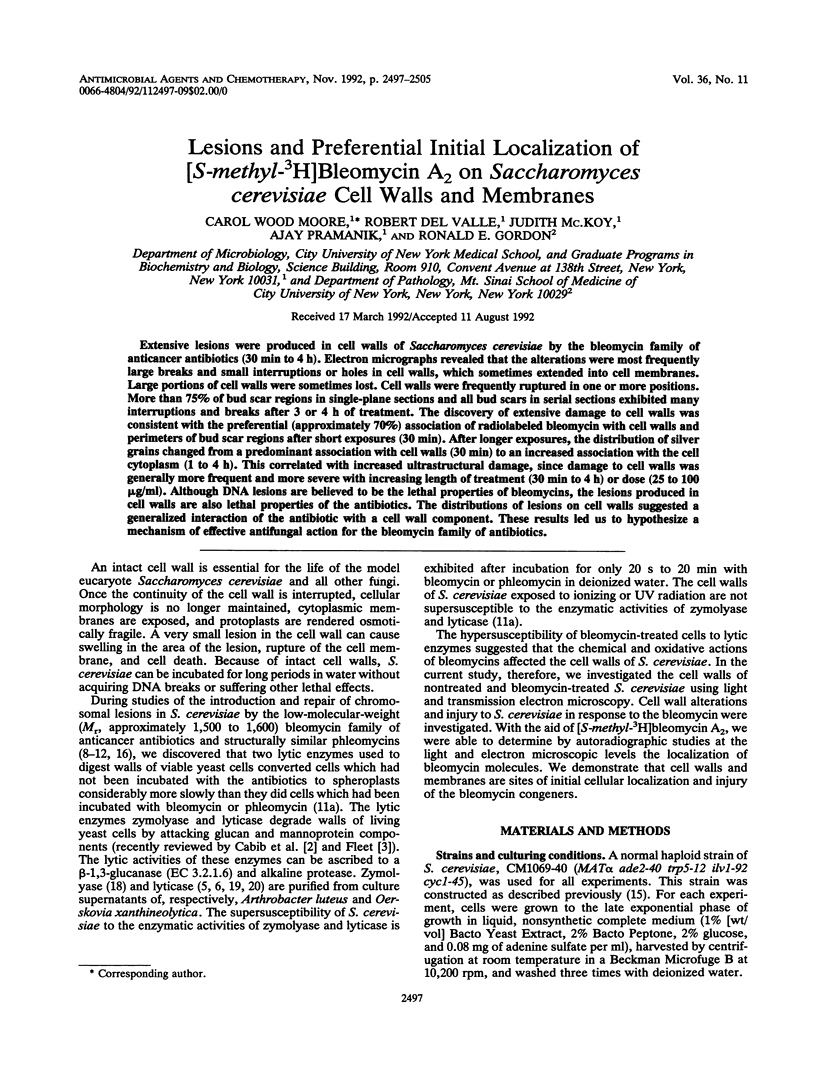
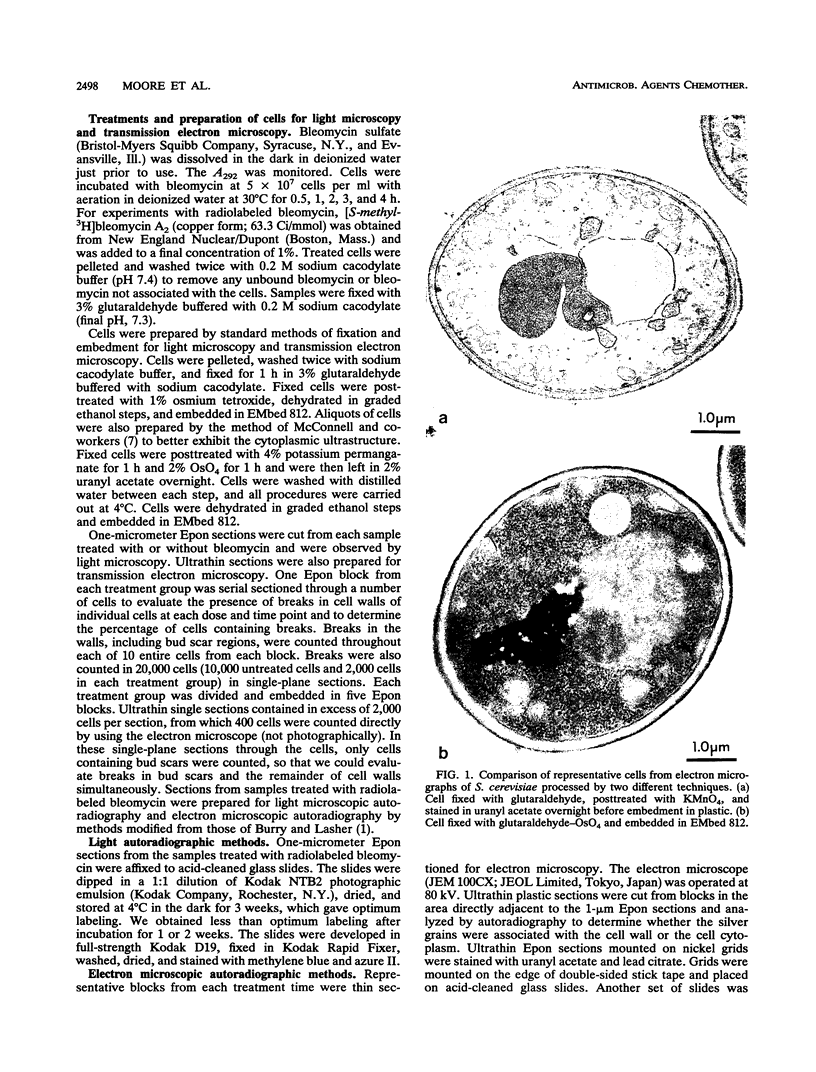
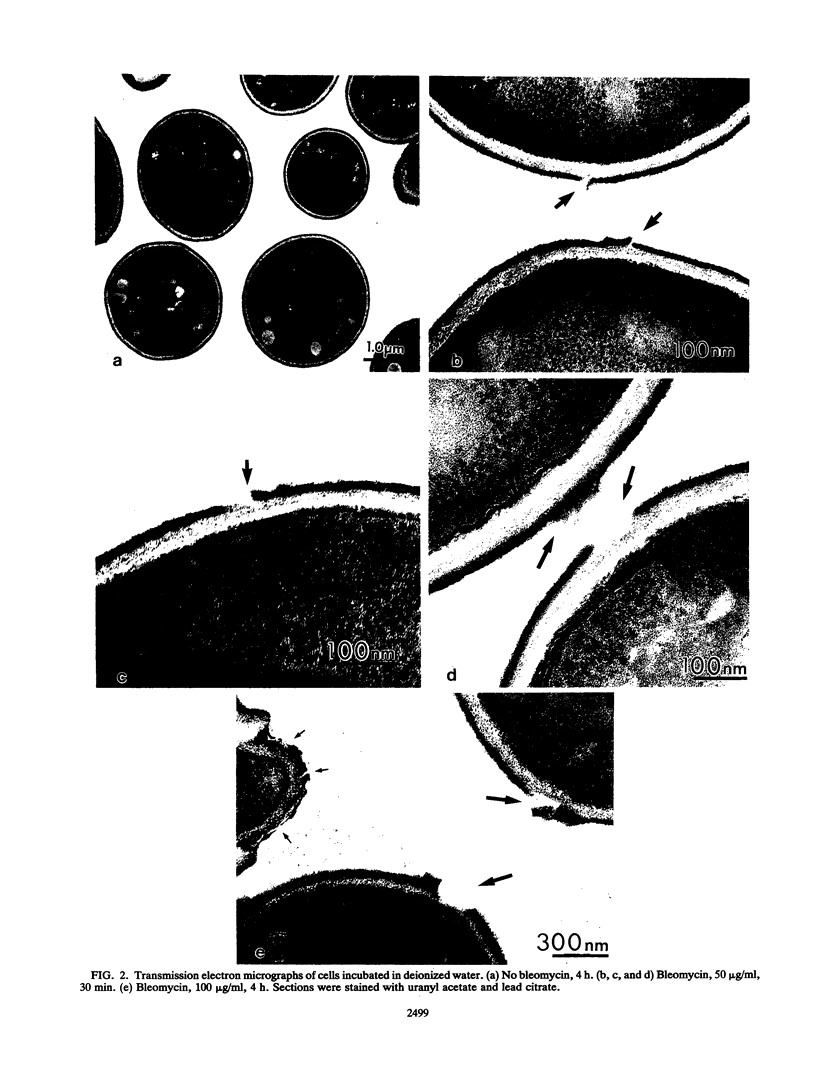
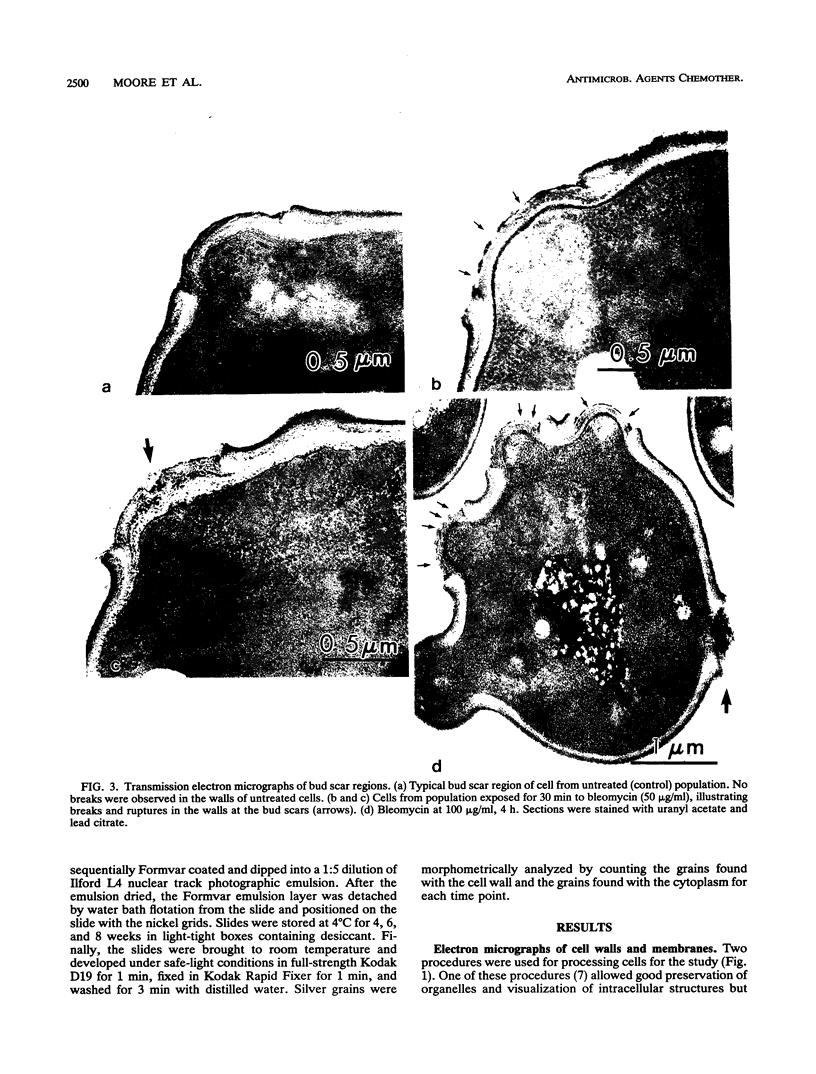
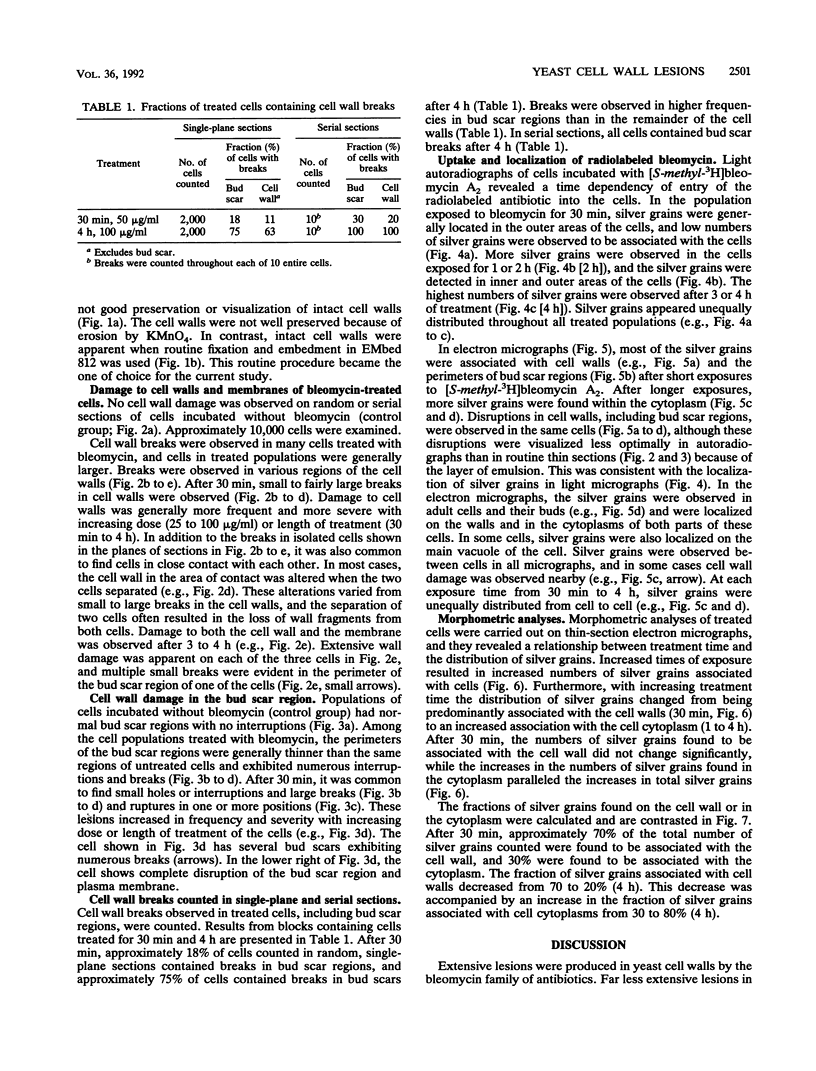
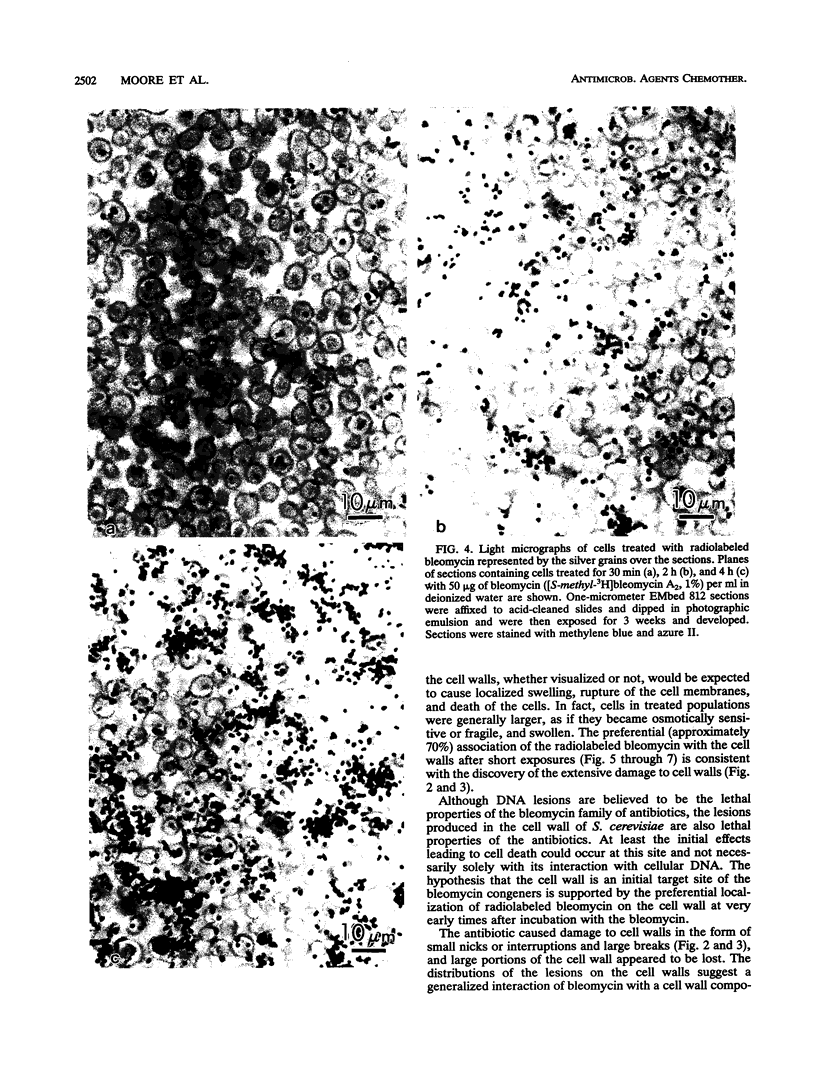
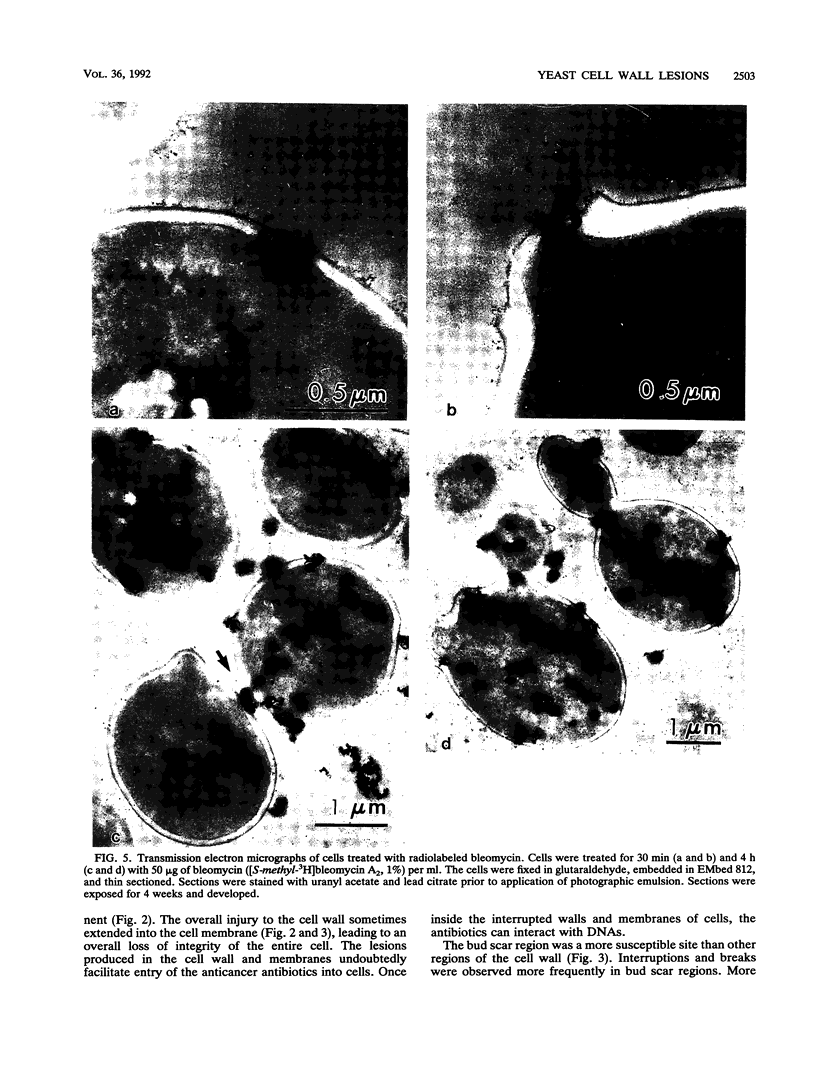
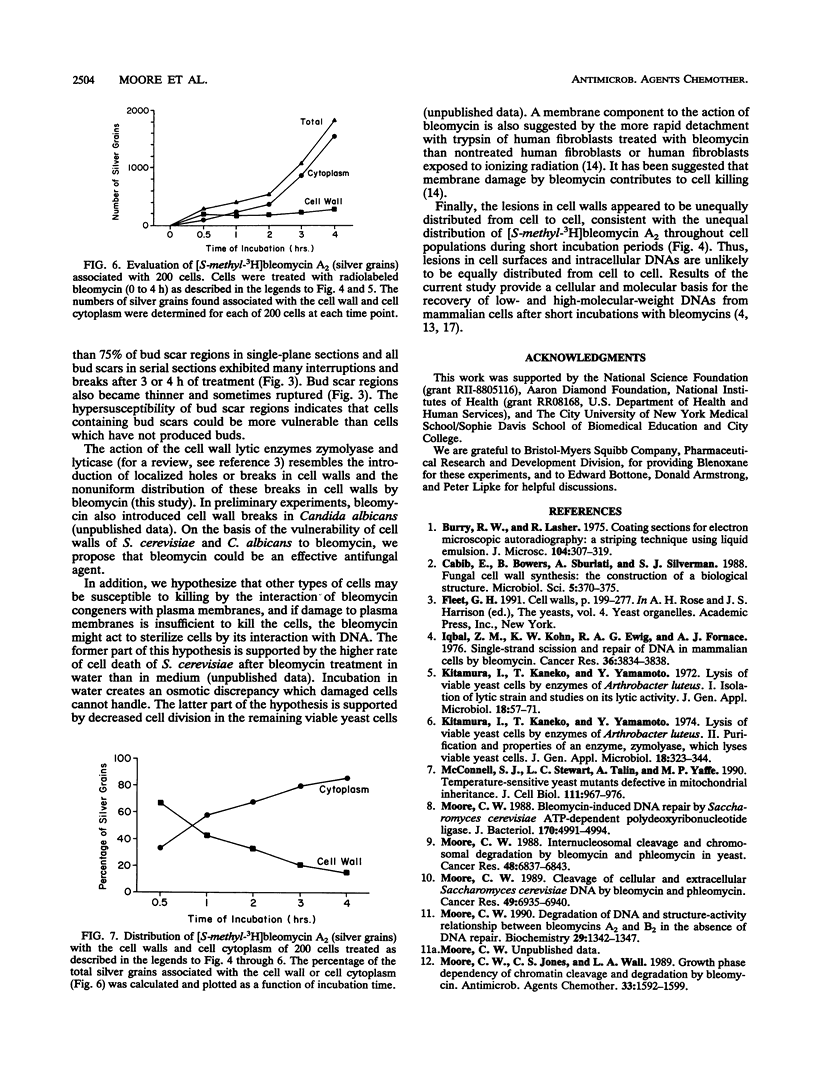
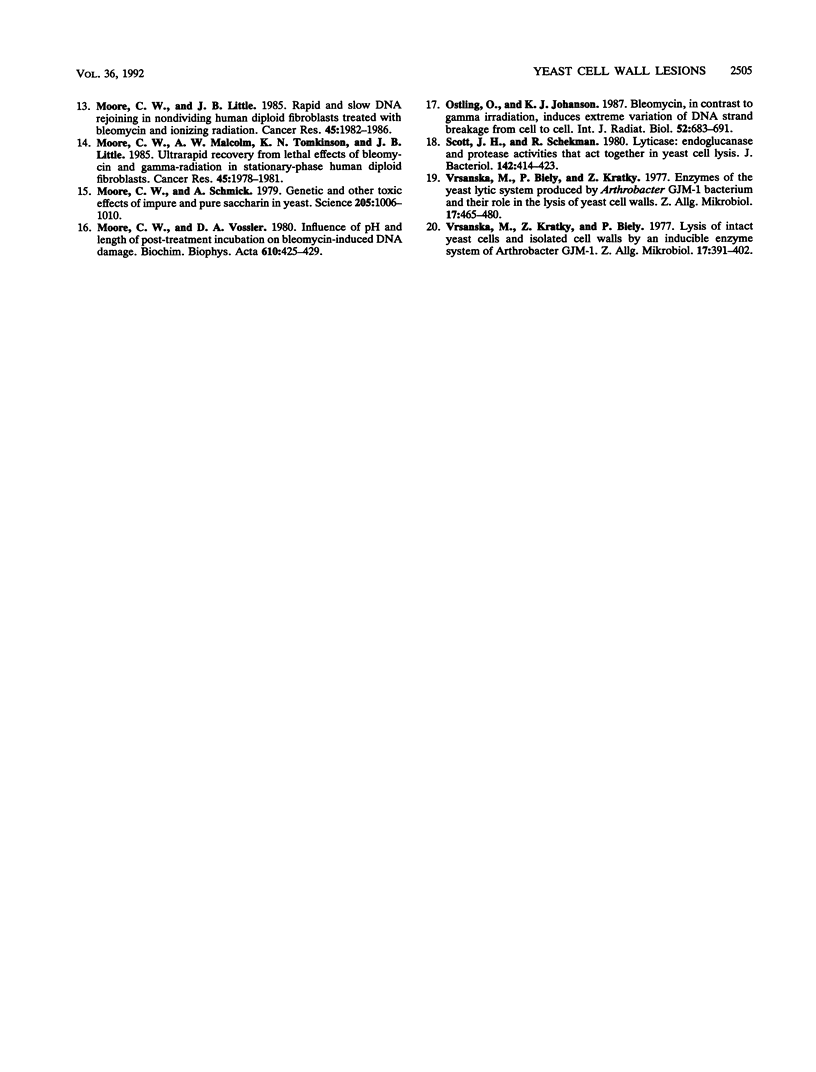
Images in this article
Selected References
These references are in PubMed. This may not be the complete list of references from this article.
- Burry R. W., Lasher R. S. Coating sections for electron microscopic autoradiography: a stripping technique using liquid emulsion. J Microsc. 1975 Aug;104(3):307–319. doi: 10.1111/j.1365-2818.1975.tb04029.x. [DOI] [PubMed] [Google Scholar]
- Cabib E., Bowers B., Sburlati A., Silverman S. J. Fungal cell wall synthesis: the construction of a biological structure. Microbiol Sci. 1988 Dec;5(12):370–375. [PubMed] [Google Scholar]
- Iqbal Z. M., Kohn K. W., Ewig R. A., Fornace A. J., Jr Single-strand scission and repair of DNA in mammalian cells by bleomycin. Cancer Res. 1976 Oct;36(10):3834–3838. [PubMed] [Google Scholar]
- McConnell S. J., Stewart L. C., Talin A., Yaffe M. P. Temperature-sensitive yeast mutants defective in mitochondrial inheritance. J Cell Biol. 1990 Sep;111(3):967–976. doi: 10.1083/jcb.111.3.967. [DOI] [PMC free article] [PubMed] [Google Scholar]
- Moore C. W. Bleomycin-induced DNA repair by Saccharomyces cerevisiae ATP-dependent polydeoxyribonucleotide ligase. J Bacteriol. 1988 Oct;170(10):4991–4994. doi: 10.1128/jb.170.10.4991-4994.1988. [DOI] [PMC free article] [PubMed] [Google Scholar]
- Moore C. W. Cleavage of cellular and extracellular Saccharomyces cerevisiae DNA by bleomycin and phleomycin. Cancer Res. 1989 Dec 15;49(24 Pt 1):6935–6940. [PubMed] [Google Scholar]
- Moore C. W. Degradation of DNA and structure-activity relationship between bleomycins A2 and B2 in the absence of DNA repair. Biochemistry. 1990 Feb 6;29(5):1342–1347. doi: 10.1021/bi00457a033. [DOI] [PubMed] [Google Scholar]
- Moore C. W. Internucleosomal cleavage and chromosomal degradation by bleomycin and phleomycin in yeast. Cancer Res. 1988 Dec 1;48(23):6837–6843. [PubMed] [Google Scholar]
- Moore C. W., Jones C. S., Wall L. A. Growth phase dependency of chromatin cleavage and degradation by bleomycin. Antimicrob Agents Chemother. 1989 Sep;33(9):1592–1599. doi: 10.1128/aac.33.9.1592. [DOI] [PMC free article] [PubMed] [Google Scholar]
- Moore C. W., Little J. B. Rapid and slow DNA rejoining in nondividing human diploid fibroblasts treated with bleomycin and ionizing radiation. Cancer Res. 1985 May;45(5):1982–1986. [PubMed] [Google Scholar]
- Moore C. W., Malcolm A. W., Tomkinson K. N., Little J. B. Ultrarapid recovery from lethal effects of bleomycin and gamma-radiation in stationary-phase human diploid fibroblasts. Cancer Res. 1985 May;45(5):1978–1981. [PubMed] [Google Scholar]
- Moore C. W., Schmick A. Genetic effects of impure and pure saccharin in yeast. Science. 1979 Sep 7;205(4410):1007–1010. doi: 10.1126/science.382356. [DOI] [PubMed] [Google Scholar]
- Moore C. W., Vossler D. A. Influence of pH and length of post-treatment incubation on bleomycin-induced DNA damage. Biochim Biophys Acta. 1980 Dec 11;610(2):425–429. doi: 10.1016/0005-2787(80)90024-6. [DOI] [PubMed] [Google Scholar]
- Ostling O., Johanson K. J. Bleomycin, in contrast to gamma irradiation, induces extreme variation of DNA strand breakage from cell to cell. Int J Radiat Biol Relat Stud Phys Chem Med. 1987 Nov;52(5):683–691. doi: 10.1080/09553008714552201. [DOI] [PubMed] [Google Scholar]
- Scott J. H., Schekman R. Lyticase: endoglucanase and protease activities that act together in yeast cell lysis. J Bacteriol. 1980 May;142(2):414–423. doi: 10.1128/jb.142.2.414-423.1980. [DOI] [PMC free article] [PubMed] [Google Scholar]
- Vrsanská M., Biely P., Krátký Z. Enzymes of the yeast lytic system produced by Arthrobacter GJM-1 bacterium and their role in the lysis of yeast cell walls. Z Allg Mikrobiol. 1977;17(6):465–480. doi: 10.1002/jobm.3630170608. [DOI] [PubMed] [Google Scholar]
- Vrsanská M., Krátký Z., Biely P. Lysis of intact yeast cells and isolated cell walls by an inducible enzyme system of Arthrobacter GJM-1. Z Allg Mikrobiol. 1977;17(5):391–402. doi: 10.1002/jobm.3630170509. [DOI] [PubMed] [Google Scholar]



